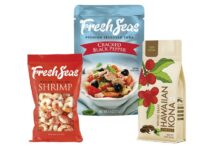Consistency holds the key when it comes to following the best food packaging norms. Here’s a checklist of food packaging industry standards to think about:
- Reduce the amount of packaging you use. Consider combining different goods in a single container or opting for package options that use less material.
- Reduce the use of plastic in all its forms has caught the eye of many these days. Petroleum-based plastic packaging is made from a finite source of fossil fuels, and much of it takes hundreds to thousands of years to decompose fully. Plastics break down into microscopic fragments, known as microplastics, in natural conditions, which contaminate water supplies and are consumed by both wildlife and people.
- Only a few forms of plastic can be recycled, and even then, recycling used things into new material can only be done a few instances before the material loses its durability and worth entirely. When employing bioplastics, one has to be cautious. Bioplastics, or compostable plastics manufactured from plants, are becoming increasingly popular as more packaging companies strive to provide environmentally friendly packaging solutions. That said, Bioplastics aren’t any environmentally friendly if they are not properly disposed of. In fact, due to deceptive advertising or inappropriate disposal and processing, some governments have banned bioplastics.
- Usage of products that are 100% biodegradable, compostable, and recyclable make sense. Choosing 100% biodegradable, compostable, and recyclable packaging is an environmentally responsible alternative to landfill. It is, however, necessary to make contact with collection and recycling facilities, as well as special collectors, who would also accept and properly dispose of such materials.
- Maintain a straightforward approach. Multiple-material packaging should be avoided. Sorting goods for recycling correctly can be a difficult task in and of itself, especially when they are comprised of several materials, like food boxes having plastic windows. Many consumers may be unaware of how to disassemble an item into its constituent parts, while disassembly is often impossible.
If at all possible, purchase packaging manufactured from a single material. Barilla, the world’s largest pasta manufacturer, has eliminated all windows from pasta packages, making them completely recyclable without the need for further effort on the part of the purchaser.
BIODEGRADABLE VS. COMPOSTABLE
Both of these phrases are frequently interchanged, and they tend to alleviate some of the guilt associated with single-use food packaging. However, in order to efficiently break down into chemicals suited for nature’s absorption, they require radically different conditions.
Biodegradable materials are those that are manufactured from animal, plant, or mineral sources and are intended to degrade naturally. These materials are degraded by naturally existing microbes into nearly harmless chemicals. Some of the most prominent eco-friendly food packaging choices on the market today are plant-based biodegradables.
Materials that decompose in a regulated compost setting are said to be compostable. They must be exposed to heat, pressure, and a healthy population of microbes for a length of time in order to degrade effectively. Compostable materials, unlike biodegradables, are meant to liberate nutrients and give value to soil as they decompose. To summarise, all compostable materials decompose, however not all biodegradables decompose. In either scenario, it’s critical to find facilities that will accept these materials so that they can be treated in the most efficient and eco – friendly way possible.



























